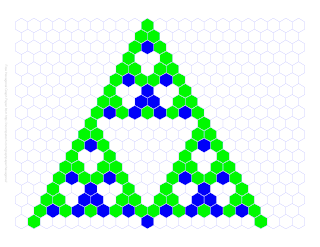We spent our whole time exploring the points-on-a-circle problem from last time. The circle is just a graphical representation of modular arithmetic (a term I finally introduced after we got familiar with the mechanics). The problem is this:
If you are working in Integers Mod n, and you choose a number to count by, will you eventually hit every number in the set?
So, for example, if n = 6, you can count by 1 or 5, and eventually reach every number between 0 and 5, but 0, 2, 3, and 4 will all get stuck in cycles that don't cover all of the possible points.
Why is that?
As a general approach, I have decided to focus on developing intuition, and encouraging the students to make hypotheses.
This worked really well today.
They have come up with ideas, and were willing to share them even if they weren't sure they were correct.
Then we all test together.
The first thing they noticed was that 1 and -1 (the last number before 0) always work.
Then someone noticed that if n is even, no even numbers will ever hit any of the odd numbers.
This is a key insight, which we talked through the correctness of.
We left off with the hypothesis that prime numbers always work, but we haven't proven it yet.
Eventually we will tie this back to a problem from December's contest, which ask the question: if you start at zero on a number line, and can only move to the right in steps of 3 or 10, what is the largest integer that you cannot get to?
Next week will be a contest.

